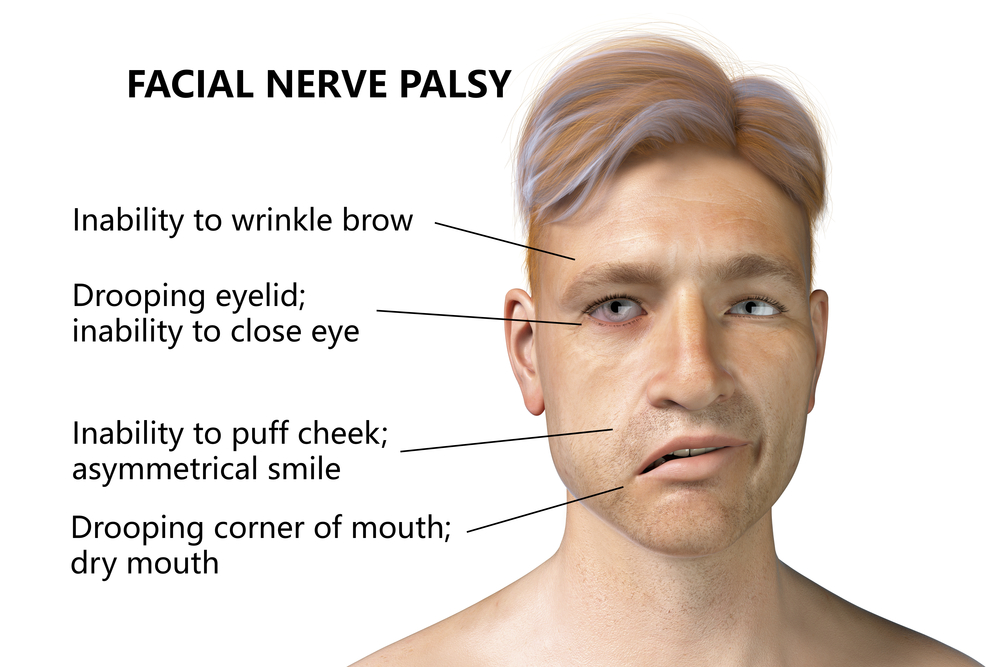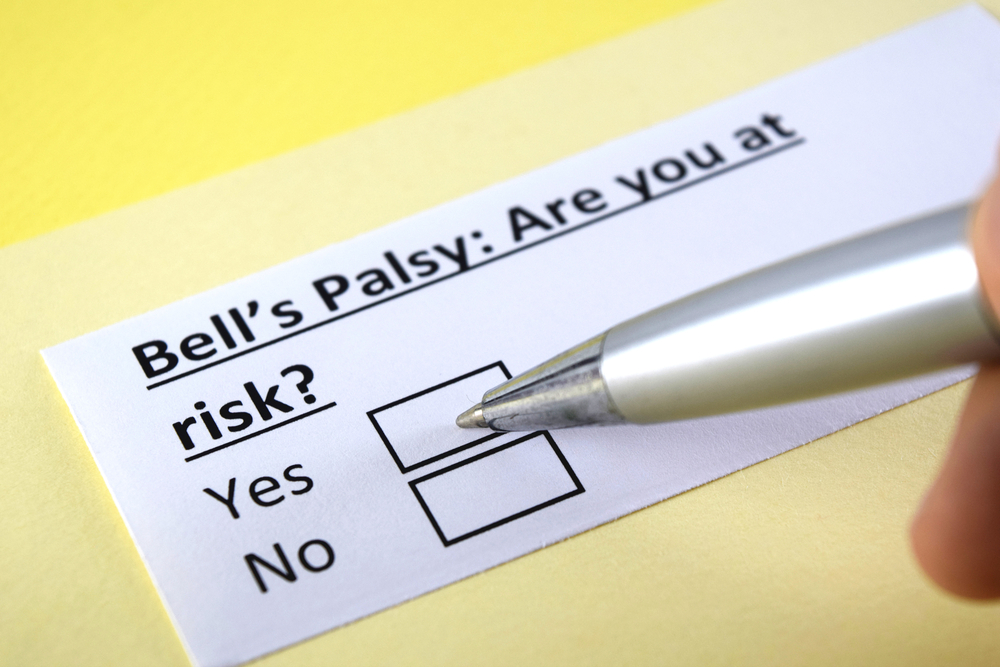Also known as idiopathic facial palsy or acute peripheral facial palsy, Bell’s Palsy is a neurological condition that affects muscles in the face. The 7th facial nerve becomes depressed or swollen, causing the muscles on one side of the face to lose temporary control. This results in paralysis or uncontrollable facial movements and actions.
The precise Bell’s Palsy causes are still being researched, but it is assumed that viruses or bacteria may be the culprit. It can manifest at any age, and scientists theorize that the reaction happens when the nerve is triggered by a viral infection lying dormant in the body.
After a close look at symptoms, doctors will likely order tests and scans to rule out the possibility of any additional underlying neurological conditions. Electromyography, magnetic resonance imaging and computed tomography tests are just some of these exams that help determine extensive nerve or structural damage in the body.
Symptoms
 The symptoms resemble those of a stroke, except a stroke will bother other muscles in the body as well, whereas Bell’s Palsy only disrupts facial operations. Some of these similar symptoms show themselves as drooping muscles on one side of the face or noticeable difficulty making facial expressions like smiling. One side of the face may become entirely paralyzed, and there may be pain involved in the ear or jaw.
The symptoms resemble those of a stroke, except a stroke will bother other muscles in the body as well, whereas Bell’s Palsy only disrupts facial operations. Some of these similar symptoms show themselves as drooping muscles on one side of the face or noticeable difficulty making facial expressions like smiling. One side of the face may become entirely paralyzed, and there may be pain involved in the ear or jaw.
Other symptoms could include:
- Drooling
- Headache
- Tinnitus
- Sensitivity to sound
- Lost sense of taste
- Difficulty talking, eating, or drinking
- Dry eyes and mouth
These symptoms come along suddenly and get progressively worse over the next few days. After a few weeks, Bell’s Palsy will begin to improve, and full recovery should happen within 6 months. Rarely, symptoms will last longer or remain permanent.
Treatment
Symptoms subside over the course of a few months with or without treatment. Nevertheless, steroids increase the likelihood of more immediate recovery of the facial muscles. At the instruction of a doctor, pain medication could be taken to help with any pain associated with Bell’s Palsy. Pain can also be alleviated with facial massages or warm towels over the affected area.
Eye protection may be worn to help keep the eyes from becoming irritated or infected by debris due to the inability to blink. Eye drops, patches, and ointments will help in this way.
Other supportive treatments are simple. Using a straw to eat or drink helps when facial muscles are still recovering. Diminishing stress as much as possible can help rest the face and make recovery easier and swifter.
Conclusion
Bell’s Palsy affects over 40,000 people every year. Many conditions can be associated with this condition, including diabetes, sarcoidosis, mumps, Epstein-Barr, shingles, herpes simplex, Lyme disease, multiple sclerosis, pregnancy, infections, injuries, and genetic predispositions.
Mild cases of Bell’s Palsy are more docile, and paralysis doesn’t occur for long. The treatment of Bell’s Palsy is mostly supportive and simply takes time to see recovery. Irreversible facial nerve damage and blindness are rare, but not unheard of.
Bell’s Palsy can be a frustrating diagnosis to receive since the underlying cause can’t be immediately pinpointed, and recovery time varies from person to person based on nerve damage.



